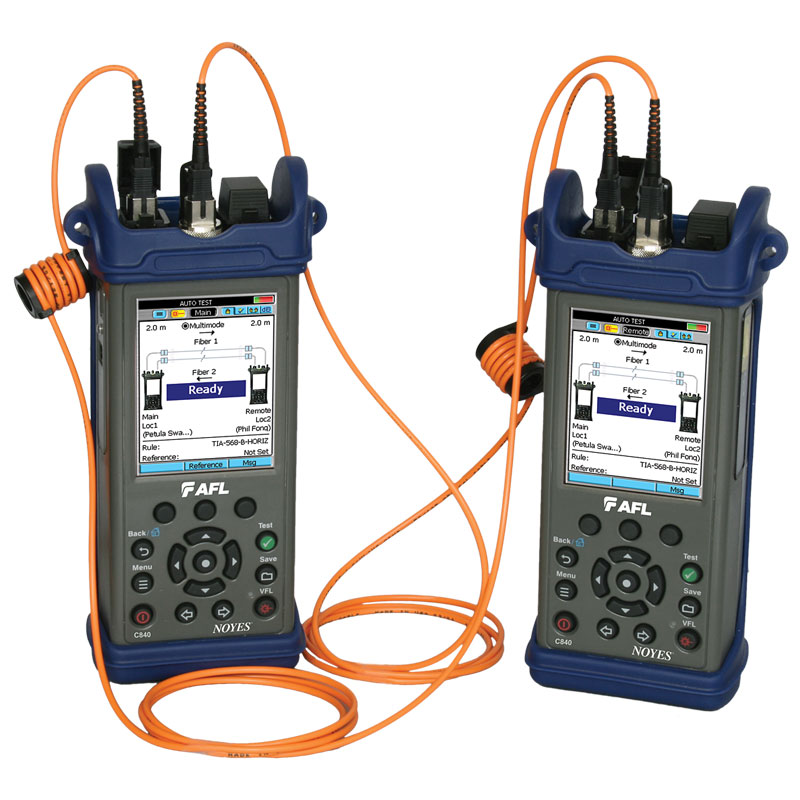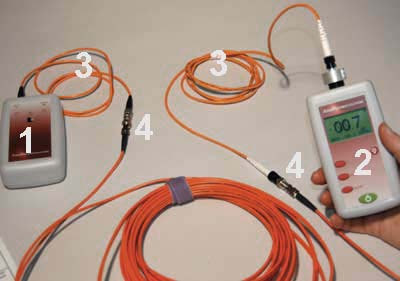High-quality ofda systems ensure precise fibre testing and consistent results.
The Function of Optical Fibre Testing in Ensuring Top Quality and Effectiveness in Connectivity Solutions
In today's rapidly developing electronic landscape, the importance of optical fiber testing can not be overstated, as it offers as a foundation for making sure the top quality and effectiveness of connectivity services. As modern technology proceeds to development, the future of optical fibre testing presents fascinating difficulties and possibilities that merit closer evaluation.
Relevance of Optical Fiber Testing
The importance of optical fiber screening can not be overstated in guaranteeing the honesty and efficiency of communication networks. As the backbone of contemporary telecommunications, optical fibres assist in high-speed information transmission, making their dependability vital to functional success. Checking acts as a proactive action to identify possible issues such as signal loss, attenuation, and physical damages, which can compromise network efficiency.
Routine testing permits the verification of setup quality and the detection of problems that could impact information integrity - ofda. By employing extensive screening protocols, network drivers can mitigate the dangers related to network failings, consisting of downtime and monetary losses. Optical fiber screening makes certain compliance with industry standards and guidelines, improving the general top quality of service provided to end-users.
Ultimately, the organized analysis of optical fibres adds to the long life and efficiency of interaction systems. It makes it possible for stakeholders to make informed choices regarding maintenance, upgrades, and troubleshooting. In a landscape where information is significantly crucial, focusing on optical fibre screening is important to sustaining robust and effective connection options, consequently sustaining the needs of modern electronic settings.
Kinds Of Optical Fibre Tests
Numerous testing approaches are employed to make certain the performance and integrity of optical fibers within interaction networks. These examinations can be extensively classified right into 2 major types: installation tests and upkeep examinations.
Installment examinations are carried out immediately after the setup of optical fiber cords to validate their efficiency and integrity - fibre testing equipment. One of the most common installment examinations consist of Optical Time-Domain Reflectometry (OTDR) examinations, which evaluate the quality of the fiber by recognizing mistakes or breaks, and end-to-end loss examinations, which measure the complete optical loss from one end of the fibre to the other
Upkeep tests, on the other hand, are performed occasionally to ensure recurring performance and spot possible issues in time. These include visual assessment, which checks for physical problems or improper installations, and continuity examinations, which validate that the signal can pass through the fibre without interruption.
Additionally, progressed examinations such as Polarization Mode Diffusion (PMD) and Chromatic Diffusion (CD) examinations can be conducted to examine the fiber's performance under various problems. By employing these diverse testing methods, service technicians can maintain high criteria of high quality and integrity in optical fibre networks.
Advantages of Regular Examining
Regular testing of optical fibers plays an essential role in keeping the general efficiency and integrity of communication networks. By carrying out regular evaluations, companies can ensure that their fiber optic installations satisfy industry standards and run efficiently. This aggressive strategy helps to determine prospective weaknesses and deterioration in time, allowing for prompt treatments before problems escalate.

Cost-effectiveness is an additional advantage. By dealing with minor concerns early, companies can stay clear of the high prices related to significant repair work or system failures. Regular screening additionally cultivates conformity with governing requirements, making certain that the network abides by necessary safety and security and efficiency requirements.
Common Issues Recognized
Determining common problems in optical fibre networks is essential for keeping optimum efficiency and reliability. Various elements can add to interruptions, consisting of physical damages, bad installment practices, and ecological influences.
Physical damages, such as bends, breaks, or abrasions, can substantially degrade signal quality. Inappropriate setup methods, including excessive tension or poor safeguarding of cables, may bring about boosted attenuation and loss of connectivity. Furthermore, environmental elements such as temperature level variations, wetness access, and rodent interference can jeopardize the honesty of the fiber.
Adapter concerns also frequently arise, with inappropriate placement or contamination resulting in boosted insertion loss. In addition, splicing mistakes can introduce substantial signal deterioration if not carried out with precision.

Resolving these usual problems with routine optical fibre screening not only enhances network dependability but also maximizes general performance, making certain that connectivity options continue to be durable and effective.
Future Fads in Testing
As the demand for high-speed connection remains to climb, the future of optical fiber screening will increasingly focus on automation and advanced analytics. The integration of expert system (AI) and artificial intelligence (ML) in screening procedures will allow much more efficient data analysis and anticipating maintenance, lowering downtime and boosting total network reliability. Automated screening services will enhance the evaluation and certification of fiber networks, reducing human mistake and increasing screening throughput.
Another substantial fad is the fostering of remote testing modern technologies. As the implementation of fiber networks broadens into remote and underserved locations, remote screening abilities will certainly permit professionals to monitor and identify network conditions without physical visibility, consequently minimizing operational prices and improving reaction times.
Furthermore, there will be a change in the direction of even more thorough testing criteria that include not check my source just typical loss dimensions yet also efficiency metrics such as latency and bandwidth usage. This all natural approach will assist in better network management and optimization approaches.
As these patterns evolve, the optical fiber screening landscape will certainly not just enhance the quality and performance of connectivity services but also support the growing intricacies of contemporary interaction networks.
Conclusion
In final thought, optical fibre screening serves as a fundamental component in maintaining the stability and efficiency of communication networks. The continuous dedication to normal screening not only enhances data transmission but likewise lines up with market criteria, fostering dependability in network facilities.